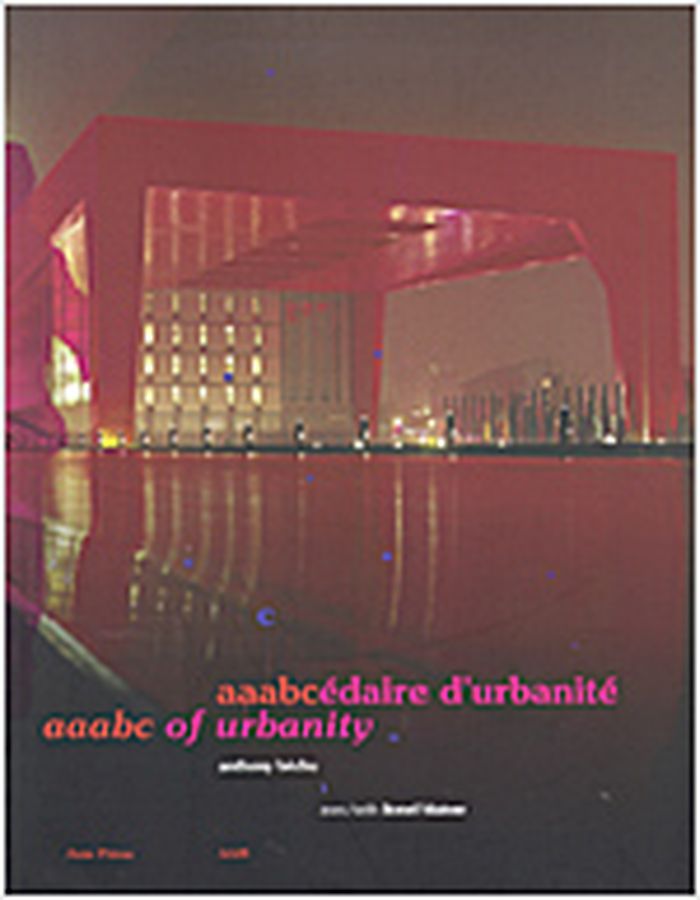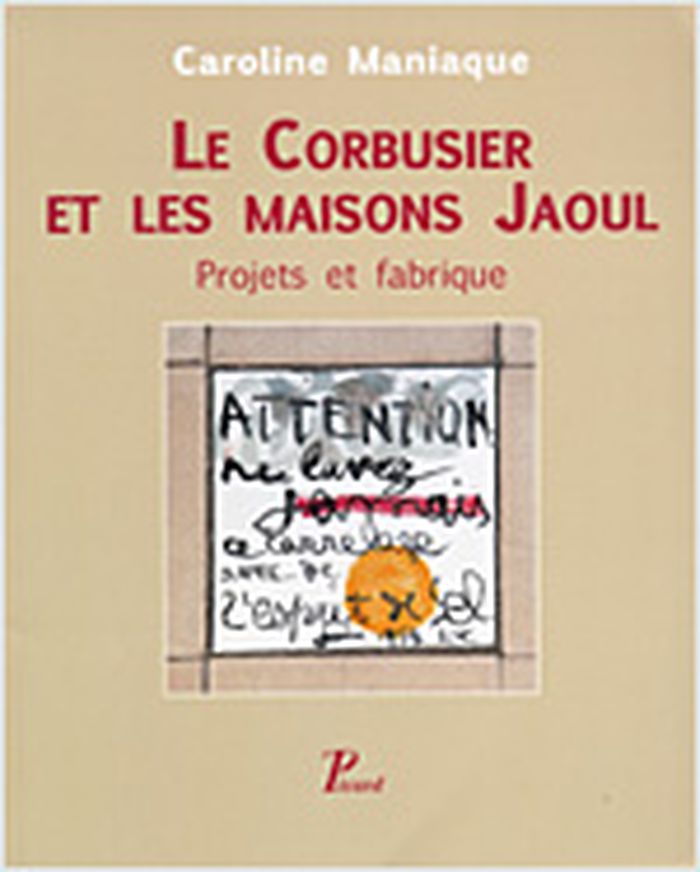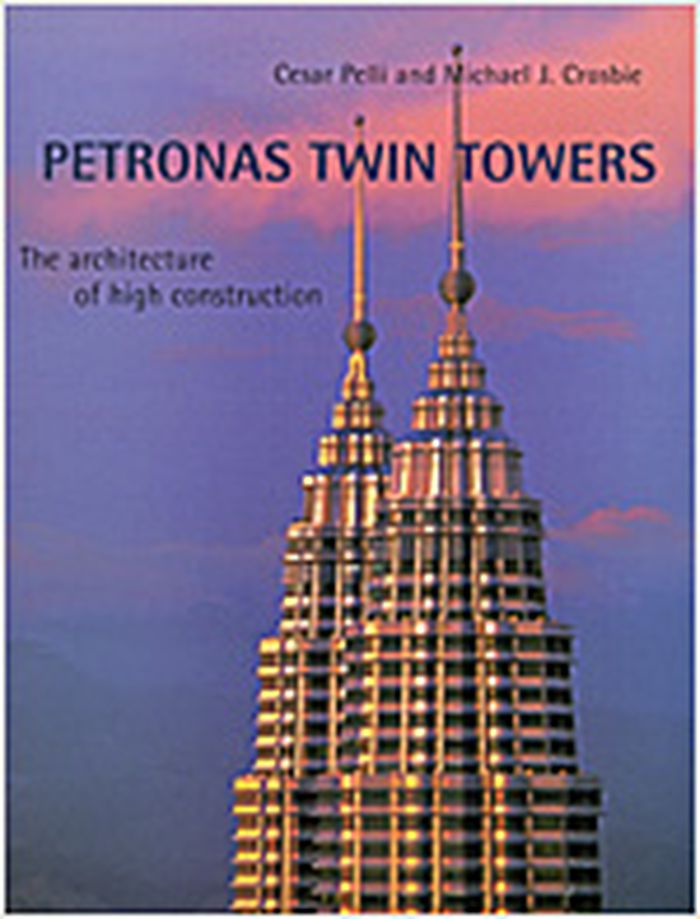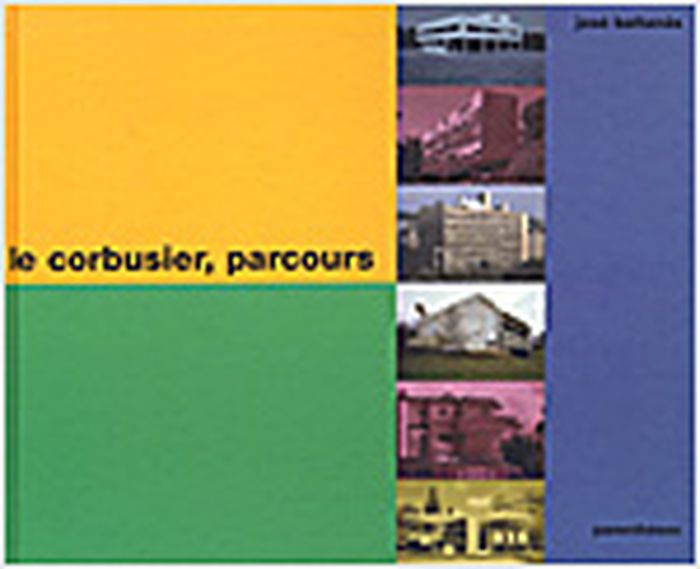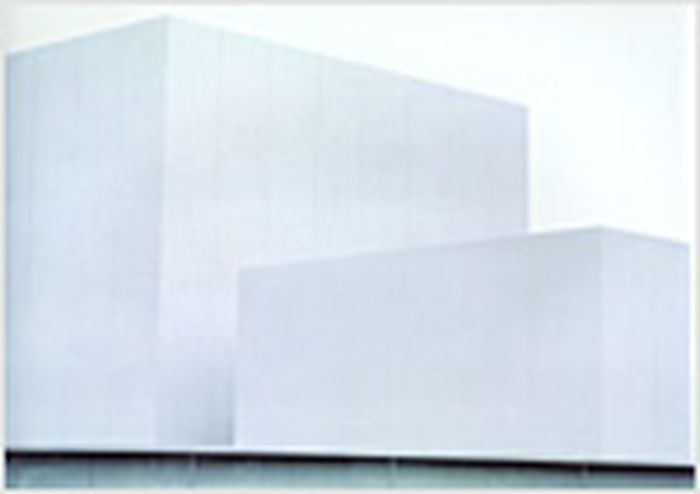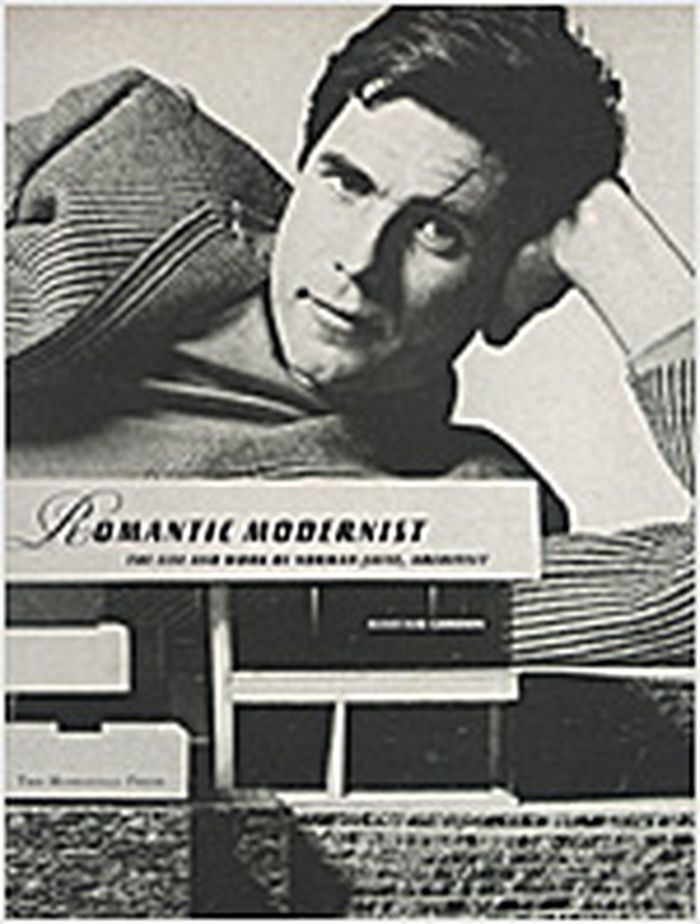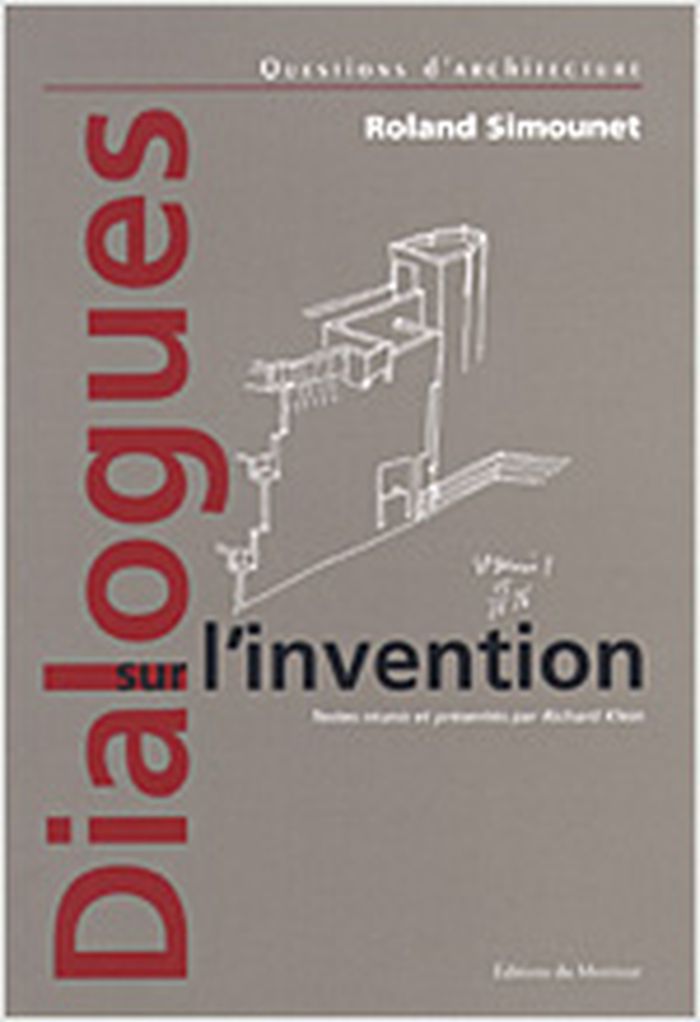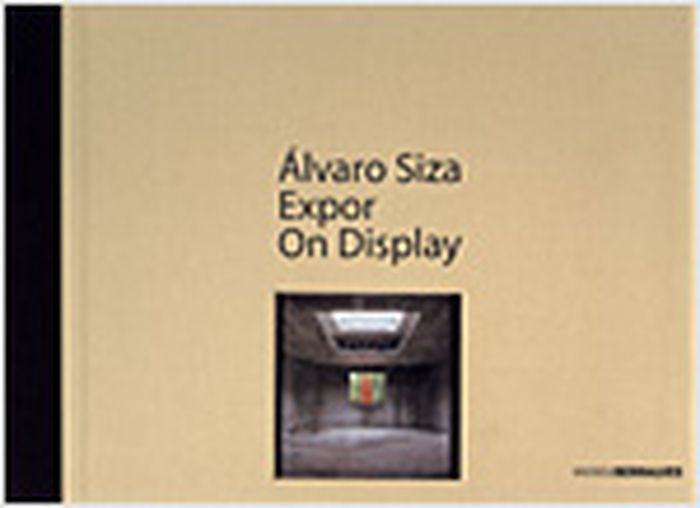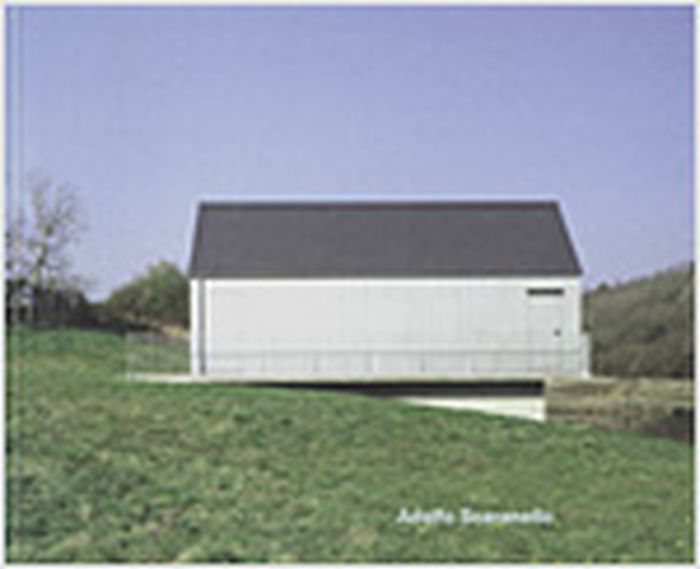$44.95
(available to order)
Summary:
De la rénovation de l'Olympia aux olympiades de Beijing, des hôtels particuliers de la Place Vendôme à l'École des élites chinoises à Shanghai, Anthony Béchu exprérimente quelques principes urbains emprunts de respects des cultures, de l'environnement naturel et patrimonial, de mixité sociale et programmatique. Ce livre en inventorie quelques-uns par cinquante-six(...)
Architecture Monographs
December 2005, Bruxelles
Aaabcédaire d'urbanité / aaabc of urbanity Anthony Béchu
Actions:
Price:
$44.95
(available to order)
Summary:
De la rénovation de l'Olympia aux olympiades de Beijing, des hôtels particuliers de la Place Vendôme à l'École des élites chinoises à Shanghai, Anthony Béchu exprérimente quelques principes urbains emprunts de respects des cultures, de l'environnement naturel et patrimonial, de mixité sociale et programmatique. Ce livre en inventorie quelques-uns par cinquante-six opérations choisies.
Architecture Monographs
$72.00
(available to order)
Summary:
Un espace intime fait de matériaux chauds et de surfaces murales colorées, couvert par des voûtes en brique et illuminé par des baies vitrées judicieusement placées, une belle cheminée entourée de niches pour accueillir des objets d'art et d'artisanat, amoureusement choisis - ce n'est pas l'image habituelle de la machine à habiter. L'idée reçue d'un Le Corbusier froid,(...)
Le Corbusier et les maisons Jaoul : projets et fabrique
Actions:
Price:
$72.00
(available to order)
Summary:
Un espace intime fait de matériaux chauds et de surfaces murales colorées, couvert par des voûtes en brique et illuminé par des baies vitrées judicieusement placées, une belle cheminée entourée de niches pour accueillir des objets d'art et d'artisanat, amoureusement choisis - ce n'est pas l'image habituelle de la machine à habiter. L'idée reçue d'un Le Corbusier froid, austère et puritain doit être révisée lorsque l'on a visité et observé les maisons que l'architecte a bâties pour la famille Jaoul, à Neuilly, à quelques pas de la place de l'Étoile. L'historiographie corbuséenne a bien noté la richesse formelle du Le Corbusier de l'après-guerre - celui de la chapelle de Ronchamp, du couvent de la Tourette, ou encore des grands édifices projetés pour Chandigarh - mais a peu mentionné les Maisons Jaoul qui peuvent pourtant être célébrées comme un des chefs-d'œuvre de la maturité corbuséenne. Cette monographie relate l'histoire de ce projet auquel Le Corbusier a consacré quatre ans de travail intensif de 1951 à 1955, en amicale collaboration avec la famille Jaoul. Leurs témoignages rassemblés dans cet ouvrage, ainsi que les documents d'archives et les photographies du chantier, donnent un éclairage original à l'histoire des maisons.
Architecture Monographs
$48.99
(available to order)
Summary:
The Petronas towers took only a couple of years to build an amazing accomplishment, due to the fact that it is the largest structure in the world and that the economic crisis in Asia hit during the middle of its construction. This book tells the story of the construction of these towers from many angles : engineer, architect, and client and sets it in the context of the(...)
Architecture Monographs
August 2005, Chichester
Petronas twin tower : the architecture of high construction
Actions:
Price:
$48.99
(available to order)
Summary:
The Petronas towers took only a couple of years to build an amazing accomplishment, due to the fact that it is the largest structure in the world and that the economic crisis in Asia hit during the middle of its construction. This book tells the story of the construction of these towers from many angles : engineer, architect, and client and sets it in the context of the rest of Cesar Pelli s work.
Architecture Monographs
Le Corbusier : le parcours
$84.95
(available to order)
Summary:
Parcourir l'œuvre de Le Corbusier, depuis ses premières villas à la Chaux-de-Fonds jusqu'aux bâtiments majeurs de l'après-guerre (l'Unité d'habitation de Marseille, le couvent de La Tourette), parcourir les différents types de programmes auxquels l'architecte a été confronté (habitation individuelle, logement social, bâtiment public civil ou religieux), et surtout,(...)
Le Corbusier : le parcours
Actions:
Price:
$84.95
(available to order)
Summary:
Parcourir l'œuvre de Le Corbusier, depuis ses premières villas à la Chaux-de-Fonds jusqu'aux bâtiments majeurs de l'après-guerre (l'Unité d'habitation de Marseille, le couvent de La Tourette), parcourir les différents types de programmes auxquels l'architecte a été confronté (habitation individuelle, logement social, bâtiment public civil ou religieux), et surtout, parcourir chacun de ces bâtiments, par une approche progressive à l'aide de plans-séquences photographiques, pour percevoir toute la richesse des espaces intérieurs et visualiser, tel l'usager, la qualité architecturale du lieu, mélange de géométrie et d'émotion, de matière et de lumière.
Architecture Monographs
$44.95
(available to order)
Summary:
The recently completed project by the architectural duo SANAA is documented in this catalogue which examines the museum through the different photographic visions of Walter Niedermayr, Luisa Lambri and Takashi Homma. Included is a complete architectural plan of the building.
Kazuo Sejima + Ryue Nishizawa / Sanaa : 21st century museum of contemporary art, Kanazawa
Actions:
Price:
$44.95
(available to order)
Summary:
The recently completed project by the architectural duo SANAA is documented in this catalogue which examines the museum through the different photographic visions of Walter Niedermayr, Luisa Lambri and Takashi Homma. Included is a complete architectural plan of the building.
Architecture Monographs
$57.50
(available to order)
Summary:
"Romantic modernist: the life and Wwrk of Norman Jaffe, architect" is the first book to explore Norman Jaffe's body of work and the inner struggle that shaped his life. After mysteriously disappearing early one day in the late summer of 1993 while on a morning swim, the famously prolific architect left behind many unanswered questions - not only about the cause of his(...)
Romantic modernist : the life and work of Norman Jaffe, architect
Actions:
Price:
$57.50
(available to order)
Summary:
"Romantic modernist: the life and Wwrk of Norman Jaffe, architect" is the first book to explore Norman Jaffe's body of work and the inner struggle that shaped his life. After mysteriously disappearing early one day in the late summer of 1993 while on a morning swim, the famously prolific architect left behind many unanswered questions - not only about the cause of his death but also about the nature of his architectural legacy. Through interviews with Jaffe's closest friends and associates, as well as exhaustive archival research, critic Alastair Gordon traces Jaffe's career trajectory from his early years on the West Coast through his increasingly celebrated life in New York and his premature, unexplained death.
Architecture Monographs
books
$45.00
(available to order)
Summary:
The Santiago Calatrava: The Architect's Studio exhibition catalog is presented as a sketchbook, of more than 50 color sketches, with an enclosed CD-Rom that documents 30 projects, including sculptures and furniture, with color photos, complete texts, and five QuickTime videos.
Santiago Calatrava: The architect's studio
Actions:
Price:
$45.00
(available to order)
Summary:
The Santiago Calatrava: The Architect's Studio exhibition catalog is presented as a sketchbook, of more than 50 color sketches, with an enclosed CD-Rom that documents 30 projects, including sculptures and furniture, with color photos, complete texts, and five QuickTime videos.
books
January 1900, Stockholm
Architecture Monographs
$37.95
(available to order)
Summary:
Ce livre réunit pour la première fois huit entretiens majeurs donnés par Roland Simounet de 1978 à 1995. Ces entretiens ont un statut bien particulier parmi les nombreux écrits de l’architecte : l’écriture y est d’une grande richesse et la personnalité de Simounet s’y révèle davantage grâce à l’exercice du dialogue. L’intérêt de ce recueil est de faire apparaître une(...)
Dialogues sur l'invention : Richard Simounet
Actions:
Price:
$37.95
(available to order)
Summary:
Ce livre réunit pour la première fois huit entretiens majeurs donnés par Roland Simounet de 1978 à 1995. Ces entretiens ont un statut bien particulier parmi les nombreux écrits de l’architecte : l’écriture y est d’une grande richesse et la personnalité de Simounet s’y révèle davantage grâce à l’exercice du dialogue. L’intérêt de ce recueil est de faire apparaître une réelle constance dans la pensée de l’architecte, mais aussi, en parallèle, l’évolution des préoccupations d’une époque – ce que met en évidence la présentation chronologique des textes : le processus de conception, la question de la ville, celle du paysage. Chaque entretien, considéré isolément, comme l’ensemble des textes mis bout à bout construisent une autre rationalité, celle d’une architecture du dialogue.
Architecture Monographs
$102.50
(available to order)
Summary:
Siza's designs for museums and exhibition spaces are represented here through drawings, plans, sections, and photographs. This book was produced in conjuction with an exhibition at the Serralves Museum of Contemporary Art, which Siza designed.
Architecture Monographs
January 1900, Porto
Alvaro Siza : expor / on display
Actions:
Price:
$102.50
(available to order)
Summary:
Siza's designs for museums and exhibition spaces are represented here through drawings, plans, sections, and photographs. This book was produced in conjuction with an exhibition at the Serralves Museum of Contemporary Art, which Siza designed.
Architecture Monographs
Adelfo Scaranello
$26.95
(available to order)
Summary:
Premier ouvrage consacré au travail de l'architecte bisontin, présentant ses constructions singulières dans leur contexte. Une cabane de pêcheurs, l'aménagement d'une halle de marché rural dans le cadre de la procédure des "Nouveaux commanditaires", une école, le hangar d'une ferme comtoise, une maison individuelle, des édifices mettant en œuvre les énergies(...)
Architecture Monographs
July 2004, Dijon
Adelfo Scaranello
Actions:
Price:
$26.95
(available to order)
Summary:
Premier ouvrage consacré au travail de l'architecte bisontin, présentant ses constructions singulières dans leur contexte. Une cabane de pêcheurs, l'aménagement d'une halle de marché rural dans le cadre de la procédure des "Nouveaux commanditaires", une école, le hangar d'une ferme comtoise, une maison individuelle, des édifices mettant en œuvre les énergies renouvelables, dévoilent le processus d'une architecture radicale et conceptuelle attentive au lieu, au matériau, à la demande, au paysage, dépassant l'opposition entre local et universel. / This pubication is dedicated to the work of Adelfo Scaranello, an architect from Besançon, France, whose singular constructions are presented in their context : a fishing cabin, a covered farmer’s market, both included among the new commissions of the Fondation de France. Also included are a school, a barn, a residence, and examples of buildings employing natural energy sources. Each project reveals Scaranello’s conceptual process which is intrinsically related to site, materials, prerequisites, and landscape and which surpasses any notion of local versus international architecture.
Architecture Monographs
